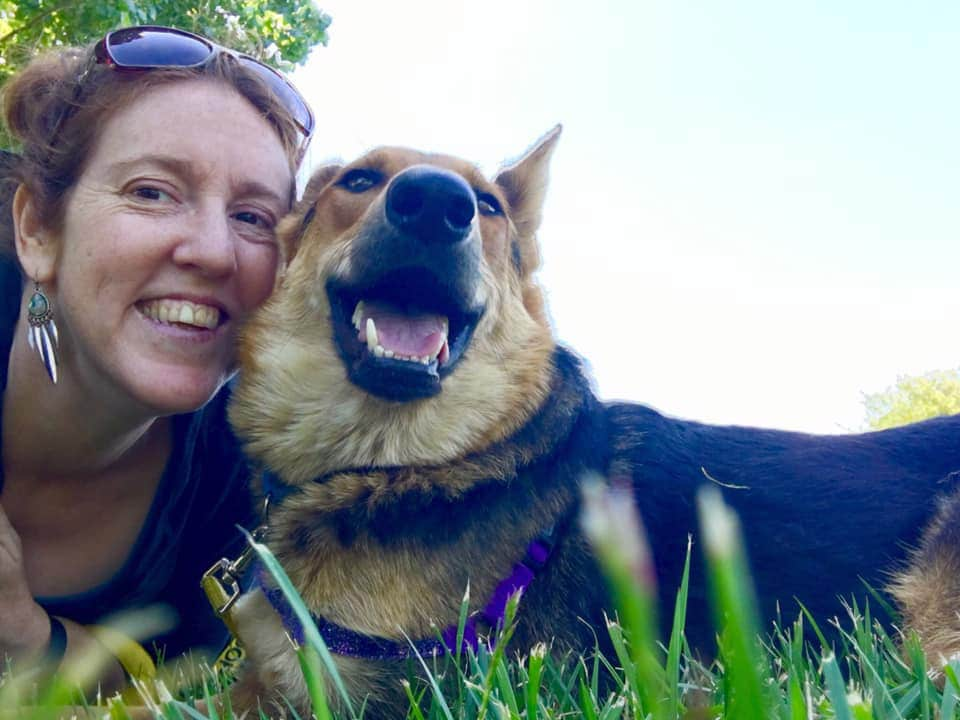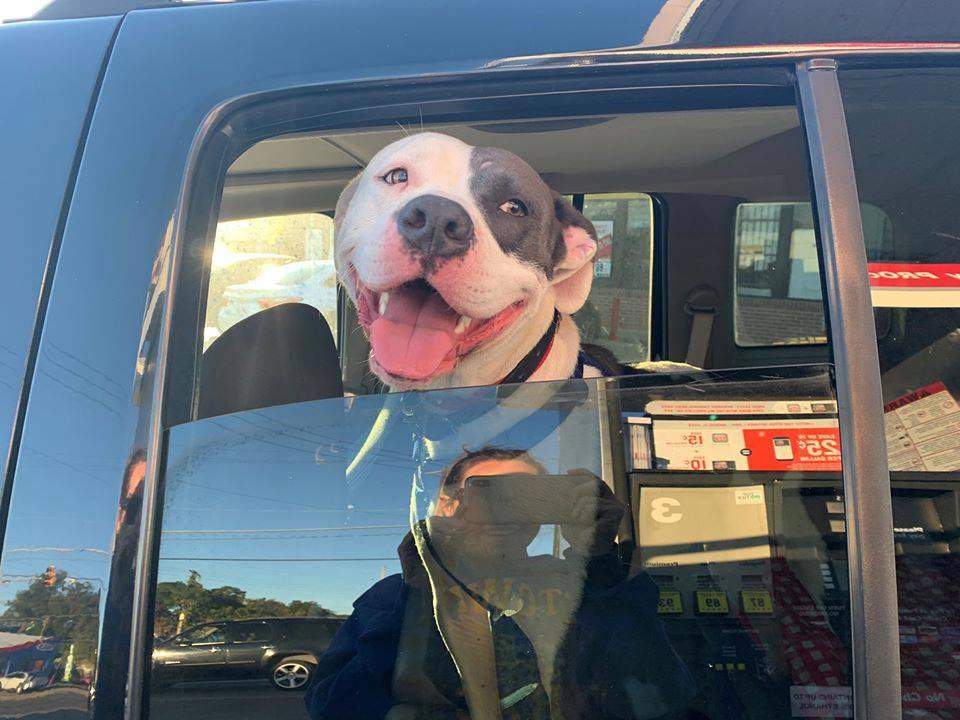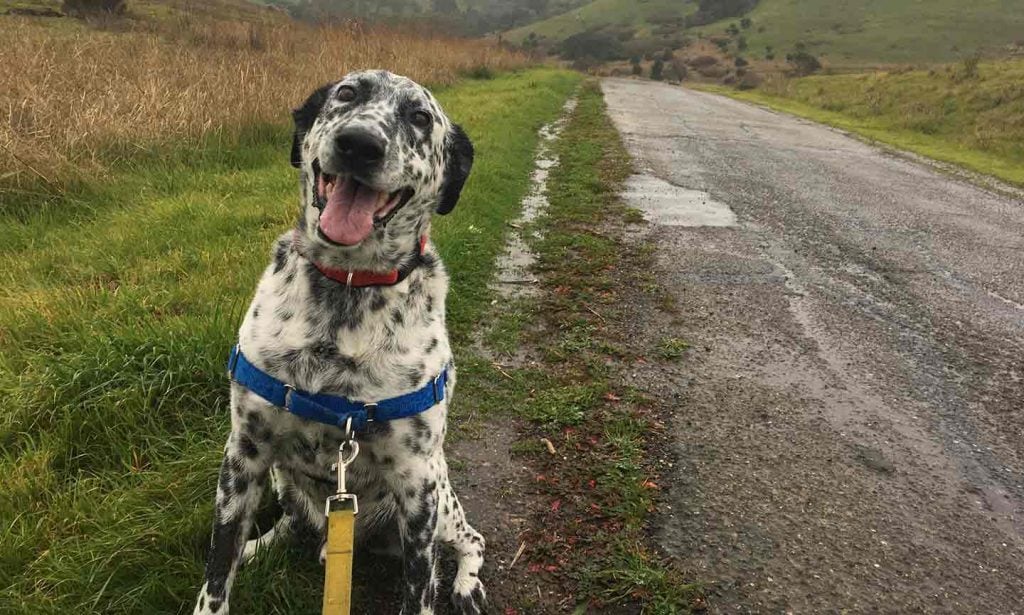Adopting or fostering is a great way to help shelter dogs. But if you don’t have the time or space to commit to having a pet (or for adopting an additional pet, if you’re already a pet parent) you can still make a big difference! In only a couple hours, a “field trip” can change a shelter dog’s life.
That’s right: Many shelter organizations offer volunteers the opportunity to take dogs on fun adventures for the day. You get to spend time playing with a sweet shelter pup—and they get to enjoy time away from the shelter and can even gain some important socialization skills.
Interested in taking a day trip you’ll never forget? We’ve got everything you need to know about how to take a shelter dog on a field trip.

What Are Shelter Dog Field Trips?
The concept is simple: Volunteers sign up to take a shelter dog out and enjoy a day away from the shelter. What you do on your “field trip” depends on the individual dog and on your own abilities and inclinations. It could be anything from an adventurous hike to a relaxing backyard lounge session.
Many animal shelters and rescues offer these programs, with names ranging from “dog for the day” to “doggy dates” and beyond. No matter what they’re called, these field trips are popular among both humans and canines, according to Finnegan Dowling, the program manager at Mutual Rescue, a nationwide nonprofit animal welfare organization based in Milpitas, California. Mutual Rescue’s Doggy Day Out program is used at shelters across the country. (You can find a directory of participating organizations here.)
Flexible and fun, field trips attract volunteers who are unable to commit to regular shifts or cannot have their own pets. “So many people genuinely love dogs but can't have one, and this fills a need for them,” Dowling says. “They can get some doggy time and enjoy that while doing something good at the same time.”

Why Shelter Field Trips? 5 Benefits for Dogs
It’s easy to see why humans love dog field trips. But the trips are just as fun for the dogs, and can even be life-changing—and they’re needed now more than ever. Many shelters and rescues across the country are at or over capacity, says Julie Castle, CEO of Best Friends Animal Society, the nation’s largest sanctuary for homeless animals based in Kanab, Utah. That means that more animals in shelters are staying for longer periods, and causing increased strain on shelter staff, she says.
So how do doggy field trips help? While the benefits are immeasurable, here are five ways these programs improve dogs’ lives.
1 Stress Relief
Field trips provide dogs with much-needed breaks from noisy shelter environments with lots of commotion. Long stays in shelters can lead to anxiety and behavioral issues, Dowling says—both of which hurt pups’ chances of being adopted. Field trips to calmer or more enriching places can alleviate that stress and even cut down on problem behaviors. “It can literally be a life-saver,” Dowling says.
2 One-on-One Attention
Shelter workers are some of the hardest working, most dedicated animal lovers around. But in a crowded and busy shelter, extra cuddles and playtime can be tough to squeeze in. That’s where volunteer “field trip directors” come in. The extra attention and care they provide to dogs on a one-on-one basis is immensely valuable, Dowling says—it helps the dog feel loved, and also lets them practice bonding with humans for when their forever family finally comes along.
3 Better Adoption Matches
Information about a dog’s likes, dislikes and personality can be tough to decipher in a stressful shelter environment. But when you take a dog out of that setting and into a more natural, fun environment, you can really see how they’re likely to behave in a regular home with a family of their own. A shelter might ask you to report on your dog’s behavior after your field trip—things like, how they reacted around children or other pets, or in crowded settings. This information leads to better adoption matches and success rates, explains Dowling.
4 Better Pics of the Pups
Pictures taken in the kennel rarely do a dog justice. But a portrait at the park? Priceless! “Finding a home for a dog who has been out and about on day trips is so much easier,” says Dowling. That’s because, instead of an unflattering “mug shot” taken inside the shelter, field trip volunteers can take pictures of the dogs smiling in the grass at the park, eating a puppacino, snuggling with them on the couch—whatever shows off their best selves. “Those are the images that allow potential adopters to relate to a dog,” Dowling says. Find out more about how photos can save shelter pets’ lives.
5 Shorter Shelter Stays
Sometimes, field trips turn into forever trips. Many dogs meet their new families while out with volunteers, or shortly after thanks to the exposure. “It's the amplification effect,” says Dowling. “Everyone who takes a dog out on a day trip becomes an advocate for that dog. They're posting pictures on their own social media. They're telling their friends. So now that dog is being seen by people who don't even follow the shelter—and it's coming with a personal recommendation from someone they know that this is a good dog.”

How to Take a Dog on a Field Trip
Interested in being a doggy field trip chaperone? The first thing you’ll want to do is contact your local shelter and ask if they have a field trip or “doggy’s day out” program. (You can also check Mutual Rescue’s directory of organizations, too.) Once you’ve found a shelter, their volunteer coordinator will set you up with any necessary paperwork. Some organizations require training or onboarding sessions, to make sure volunteers know the basics of caring for a dog, too. Once you’re registered, you can work with the coordinator to schedule an upcoming field trip.
As you prepare for your first adventure with a shelter pup, consider these expert tips:
Brush Up on Your Leash Skills
Shelter staff will pair you with a dog who matches your experience level, whether you’re new to dog handling or a seasoned pro. If you’re not confident about leash skills like knowing how to safely deter pulling or manage interactions with other dogs, consider working with a trainer first. “Most trainers will provide discounts to rescue volunteers to teach these skills, or even work with the shelter themselves,” says shelter volunteer and certified dog trainer Blythe Neer.
Prepare Your Car
If your field trip plans include driving in your car, make sure you have a dog-safe car setup. Depending on the breed of dog you take out, and how active (aka distracting) they tend to be on the road, you may want to invest in a crash-tested seat belt, dog car seat or backseat barrier. It’s also a good idea to use a car seat cover to protect your upholstery from fur, drool and other messes.
Choose Your Location Carefully
When planning your day, consider the individual dog you’ll be taking out, advises Brooke Greenberg, a certified dog trainer and field-trip volunteer with the SPCA Tampa Bay. “It's important to take into account the dog's temperament,” Greenberg says. “A shy dog is likely to prefer a less crowded location like a community park, mid-week. A trip along the waterfront with a stop at a cafe is better for a dog that doesn't mind other dogs in close proximity.” Staff at the shelter will be able to tell you what they know about your dog’s personality and offer suggestions for field trip activities.
Take Time to Stop and Smell the Roses (and/or Hydrants)
Wherever the day takes you, allow your four-legged friend plenty of time to partake in can’t-miss dog activities, like sniffing. Smelling the outside world is a rare and valuable treat for shelter dog. In fact, it’s good for their health! Studies show sniffing decreases heart rates, among other benefits.
Take Notes
While out and about, take note of the dog’s personality, quirks, likes, dislikes and special qualities. How do they react to children or other pets? Do they like crowded environments, or do they prefer more personal space? Shelter staff can use this information to find a fitting forever home.
Spread the Word
Field trips present adoption opportunities, so make sure you’re prepared to tell people about your new buddy. Consider bringing flyers with the dog’s information or the shelter’s business cards. Who knows—you just might find your pup’s future forever family!

Field trips are one of the many ways you can make a difference in a shelter dog’s life. Within a couple hours, you can provide valuable enrichment and life-saving adoption opportunities to an animal in need—all while making a new friend. Now that’s what we call a win-win.
Looking for more ways to help pets in need? You can donate supplies to your favorite shelters and rescues via Wish List, or browse Chewy Adoptions to find a dog to bring home. Check out these other ways to help:
Share:









